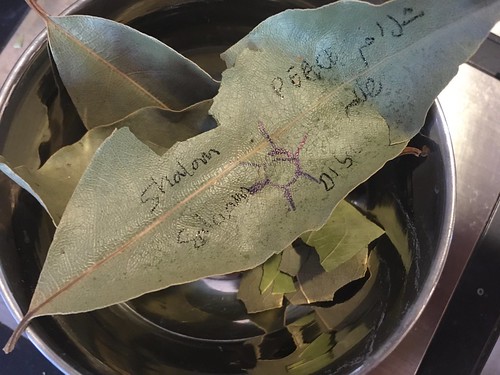Peace Incense
It is a long standing tradition to create at least one form of incense during the Oriental Perfumery courses. This fall (November 10-14, 2019), we created incense cones using a very unusual material fire tree resin AKA grass tree (Xanthorrhoae) that one of my students harvested herself and brought all the way from Australia.
The incense blend was born out of the concept of marrying plants and resins from both Australia and the Middle East: bay leaves, eucalyptus leaves, fire tree resin, Australian sandalwood, and an array of Middle Eastern resins. On the leaves we've written prayers before causing them into pieces and grinding them. Prayers that will go up in smoke and come true.
As we were writing on the leaves it, I recalled a dream I had about teaching perfume and incense to youth with the vision of harnessing the alchemy of it to sawing seeds of peace - first within and then outwardly to our environs.
I am now praying to have the courage, strength, wisdom, and the right help and partnership to be sawing these seeds for real in my everyday life.
Without any messed up politics, but through meeting people's true essence, and mine... This requires serious self reflection and internal alchemical transformations that transcends trauma, hurt and long history of pain and destructive defense mechanisms.
Of course, it is so much easier said than done... So I am hesitantly putting it here and trusting you to guard this and save this as a reminder to make this come true on all levels. The process begins from within. I hope that soon enough I will be ready to share it and bring it outwardly and lead others through this process.
Thank you 


